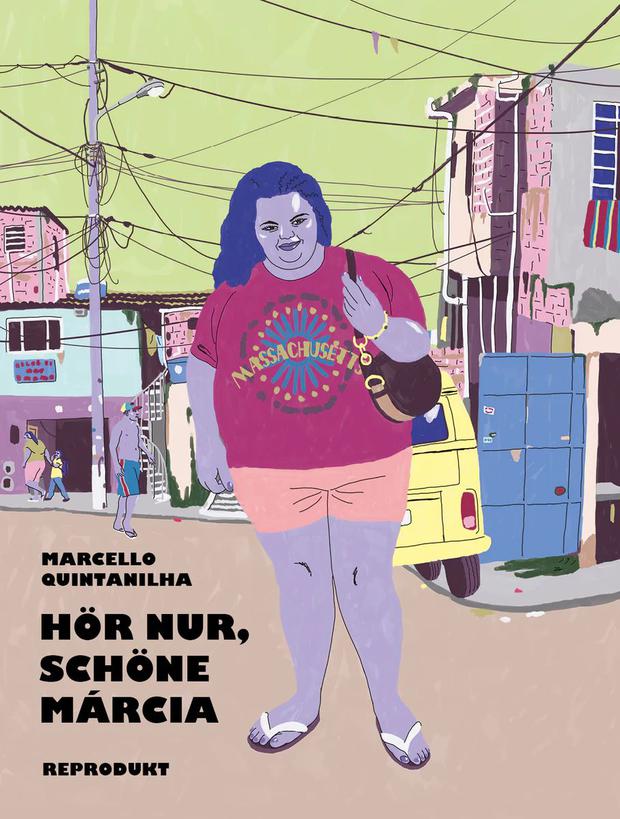Márcia holds her rebellious daughter by the wrist. “Wait a minute Miss, you don’t turn your back on me when I’m talking to you!” she yells. But the young adult cares little about her mother’s later efforts to raise her child.
Márcia’s concern that Jaqueline could go down the wrong path is soon confirmed. When she wants to pick up her daughter from the police after she has been arrested, she has long been free – and has disappeared. Who paid the bail? Márcia goes on a search and ends up in a network of drug gangs and criminal militias.
living on the poverty line
In his graphic novel “Listen, beautiful Márcia”, the Brazilian comic artist Marcello Quintanilha tells a gripping story against the background of the dark side of his country.
Although Márcia works two jobs and her boyfriend works in construction, they live on the edge of the poverty line – a car, medicine or a lawyer are luxuries they cannot afford. Everyday life in her neighborhood on the outskirts of Rio de Janeiro includes prostitution, drug trafficking and violence.
Tenderness and love as strongest weapons
How can Márcia save her daughter from this whirlpool? She faces a choice that could upset those she trusts and could endanger her life.
The surprising turning point in the story is Márcia’s unexpected encounter with a work of art. In the midst of the struggle for existence, it brings tenderness and love into the plot as its strongest weapons.
At the same time, the element of art gives the story a depth that the reader finds difficult to let go of. Everyday life, characterized by poverty, political failure and corruption, is illuminated by a glimmer of hope.
Brightly colored key scenes
Strong dialogues, strong colors and cold-warm contrasts make the moving story a coherent overall work. In relaxed drawings, Quintanilha concentrates on the essentials, avoiding unnecessary details or the classic framing of his panels, which he arranges on the pages like pictures taken from real life.
He uses colors generously: as a flat background, they reinforce dramatic scenes and symbolize anger or sadness. He chose a cool blue-violet tone for his skin color. Because the characters are often portrayed very close, the succinct tone dominates the pages, giving the story a harsh, distant atmosphere that is aesthetically reminiscent of film noir.

Some key scenes, such as when Márcia bravely defends himself against an impending rape, catapult the reader into the world of retro comics with brightly colored background rays – perhaps an indication of the author’s influence from his time as a young comic reader?
Born in Rio de Janeiro in 1971, Quintanilha belongs to the “old guard” among comic creators. In 1988 he started as an autodidact. With “Hör nur, meine Márcia” he won the prize for “Best Album of the Year” at the Angoulême Festival in 2022, the most important comics event in Europe. In 2016, his graphic novel “Tungstênio” had already been chosen as the best crime novel there.
To home page

